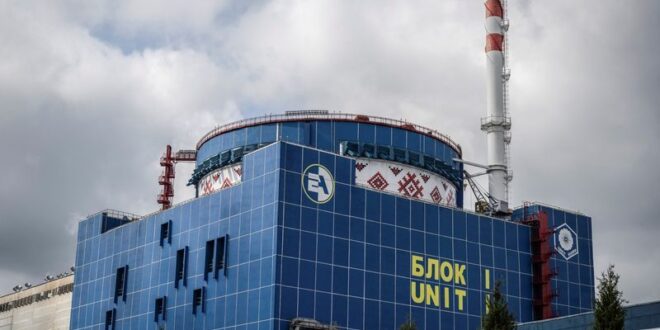KYIV (Reuters) – Ukraine hopes to sign a deal in June to buy two nuclear reactors from Bulgaria as it seeks to compensate for the loss of its vast Russian-occupied six-reactor Zaporizhzhia plant, the head of nuclear firm Energoatom told Reuters.
The new reactors will be built at the Khmelnytskyi nuclear power plant in western Ukraine and equipped with Russian-designed equipment that Kyiv wants to import from Bulgaria, Petro Kotin said in an interview.
Russia gained control of the Zaporizhzhia station, Europe’s largest nuclear plant, after launching its invasion of Ukraine in February 2022. Zaporizhzhia’s six nuclear reactors are now idled.
“Negotiations between the government of Ukraine and Bulgaria continue… and I think that somewhere in June we will have the result of concluding contracts with Bulgaria for the purchase of this equipment,” Kotin said in the interview, conducted late on Thursday.
“I set (the) task before our construction organisation and Khmelnytskyi station to have it ready to be installed by June,” he said, referring to the first of the two reactors which would be ready for installation straight away.
He said if it is delivered on time and in full Energoatom would be ready to begin start-up work on the new reactor in two to three years, a period which is also needed to manufacture the turbine for the unit. Energoatom is in preliminary talks for General Electric to build the turbine, he said.
The second reactor would be installed later and Kotin did not give a timeframe.
He said Bulgaria had previously put the price of the two reactors at $600 million, but that Sofia was keen to increase the price of the equipment, which other than Bulgaria can only be bought from Russia.
“There is a constant desire on the Bulgarian side to achieve greater benefits for themselves than this $600 million and the more time passes the higher prices they voice, but we are still focused on the price of $600 million,” Kotin said.
He said Energoatom also intended to build two more reactors at Khmelnytskyi based on the American AP-1000 reactor, and that the company would start pouring concrete for the two new units in early April.
‘RUSSIA WON’T GET IT UP AND RUNNING’
Since the loss of Zaporizhzhia, Ukraine relies on nuclear power from three operating plants in the country, totalling nine reactors, including two reactors currently in operation at the Khmelnytskyi plant.
Kotin said Ukraine had not abandoned plans to restart the Zaporizhzhia power plant one day and that, unlike Russia, it would be able and know how to get the plant back online.
“They (Russia) are still saying they will restart the plant, but they can’t technically start it up because there are no electrical lines, no water and no personnel,” Kotin said, adding that Moscow did not want to recognise that at a political level.
On the battlefield, however, Ukrainian troops are themselves on the backfoot after trying to mount a counteroffensive last year that proved unable to piece Russian defensive lines in the Zaporizhzhia region.
Kotin said that Energoatom, which retained the staff that operated Zaporizhzhia, would be ready to restart the plant after its “de-occupation” and that it already had trained special teams to do so.
After the Kakhovka dam was blown up, the station lost a steady inflow of water from the Dnipro River necessary for the power units, and so far the plant has only a small supply in a pond near the facility.
Kotin said in current conditions only one reactor can work for no more than one month and then must be switched off due to a lack of water for its cooling system.
He noted that to restart the station, either the destroyed Kakhovka dam must be rebuilt or pumps must be built to supply water from the Dnipro.
“(It takes) somewhere around two years, but that is about the main costly measures. During this time it will be possible to check all systems and if there is no sabotage, all other systems will be ready for start-up.”
(Reporting by Pavel Polityuk; Editing by Tom Balmforth and Susan Fenton)
 BeritaKini.biz Berita Viral Terkini di Malaysia
BeritaKini.biz Berita Viral Terkini di Malaysia





